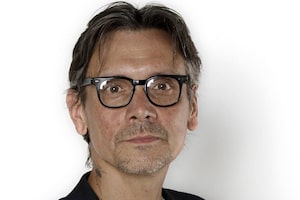A Portrait in Shame
One day in 1912, the Viennese painter Egon Schiele painted a portrait of his lover. Nothing unusual about that: Schiele, a contemporary of Gustav Klimt, frequently painted his many lovers, and usually in a fiercely defiant style that graphically depicted their erotic allure.
But this painting, which would come to be called Portrait of Wally, was different: The subject is fully clothed, and her blue eyes gaze at the viewer with gravity and confidence that suggests an attraction to the painter that transcends the purely carnal. Clearly, at the time of the painting, Valerie Neuzil, known to the painter as 'Wally,' had a powerful hold on Schiele. As she would over many people for the next century, for reasons that have as much to do with the lingering historical stain of Nazism as it does Wally's inherent allure.
Andrew Shea's Portrait of Wally, screening next Wednesday and Thursday at the Bloor Hot Docs Cinema in Toronto as part of its monthly Doc Soup program, is an account of greed, betrayal, culpability and self-serving moral relativism. It does dark justice to that other famed account of postwar Viennese murk and intrigue, Carol Reed's 1949 film noir The Third Man. But where that fictional movie, written by Grahame Greene, contained its story of Nazism's long shadow to the city itself, Shea's non-fiction movie finds its most menacing intrigue in the high-stakes, multimillion-dollar art world of New York.
For it was there, on the walls of the Museum of Modern Art in 1997, that Schiele's painting, now worth millions of dollars, was spotted by a family member of the late Lea Bondi, a Jewish gallery owner – and friend of Schiele's. The painting was stolen, by a Nazi art collector, from Bondi's apartment during the process of 'aryanization' that took place after the Hitler's annexation of Austria in 1938.
Thus began one of the more outrageously protracted and shameful episodes in contemporary art world history, as the surviving family of Bondi attempted to prevent the painting from returning to Austria – from where it had been loaned by a private Schiele collector and gallery owner who'd secured the painting for his own collection after Bondi had gone to him for help retrieving it.
Claiming that holding the painting in the U.S. until proper provenance could be determined would threaten the livelihood of major art institutions such as MOMA, the New York art institutional establishment did everything – including, it is suggested, get one of the film's co-producers fired from his reporting stint on National Public Radio – to block the process whereby legitimate ownership of the painting could be determined.
Although the case eventually wound up with a settlement that paid the family $19-million (U.S.) for the painting's return to the Leopold Museum in Vienna, Shea's film leaves you with a clinging sense of unfinished dirty business. It's not just the sheer amount of expense and effort Bondi's family were compelled to invest to acquire what evidence suggested was so clearly theirs, it's the truly troubling collusion of so many influential art world players in blocking and delaying that outcome. That it took nearly 70 years for this particular Nazi crime to be even so unsatisfactorily resolved – the settlement assured that nobody was ever made to admit any wrongdoing – suggests that the pain and havoc is still being felt.
Before Amour
It's another kind of legacy being honoured by the retrospective titled A Man and A Woman at the Bell Lightbox in Toronto starting next week (Jan. 11 to Feb. 4). Inspired by the release next Friday of Michael Haneke's internationally heralded, Palme d'Or winning Amour, which stars the French screen stalwarts Jean-Louis Trintignant (now 82) and Emmanuelle Riva (85) as an elderly couple facing mortality and an unthinkable separation, the program offers a parallel tracking of two of the European cinema's most remarkable, varied and consistently adventurous careers. When you consider that together, Riva and Trintignant have appeared in works by Alain Resnais, Eric Rohmer, Krzysztof Kieslowski, Georges Franju, Jean-Pierre Melville and now Haneke, their long careers amount to a virtual tour of some of the finest European movies of the past 50 years.
See Amour, then see what came before.
 Geoff Pevere
Geoff Pevere